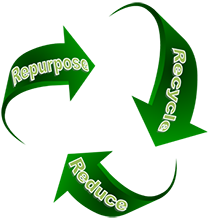Welcome
Metro Office Furniture partners with companies who share our mission to refurbish, repurpose, recycle and reduce waste. We have 25 years’ experience solving office furniture liquidation needs of businesses in the Pacific Northwest. We have developed a vast network of partners who work with us to Refurbish & Repurpose, Recycle and Reduce Waste. Let’s work together to make a positive impact on the environment while meeting your office furniture liquidation needs.

Refurbish and Repurpose
Office furnishings are restored to more pristine condition through attention to cleaning, repairing defects, replacing worn fabric or refinishing. These pieces are also popular among startups and struggling offices.
Our partners are creative masters at refurbishing used product for resale in the secondary market and to create new products. Our specialty is finding placement for vacated office furnishings and electronics. Placement includes the secondary market, charitable organizations, and developing countries.
Repurposing and Refurbishing can save between 300 and 700 pounds of landfill waste per cubicle.
Recycle
Office furnishing elements that cannot be repurposed or refurbished are disassembled and sorted for recycling.
We reduce waste by working with our network of specialized recycling partners to address Electronic (E-waste) and Furniture (F-waste.) Electronic waste represents 2 percent of waste stream discarded in American landfills, but it equals around 70 percent of toxic waste. Both E-waste and F-waste are disassembled, separated into various materials (such as metals, plastics, and fabrics) and sent to the appropriate recycling partner.
Product materials and components are reintroduced back into the manufacturing process cycle. Recycling is not always an economic win, but it is a moral win and worth the effort.
Reduce Waste

EPA developed the non-hazardous materials and waste management hierarchy in recognition that no single waste management approach is suitable for managing all materials and waste streams in all circumstances. The hierarchy ranks the various management strategies from most to least environmentally preferred. The hierarchy places emphasis on reducing, reusing, and recycling as key to sustainable materials management.